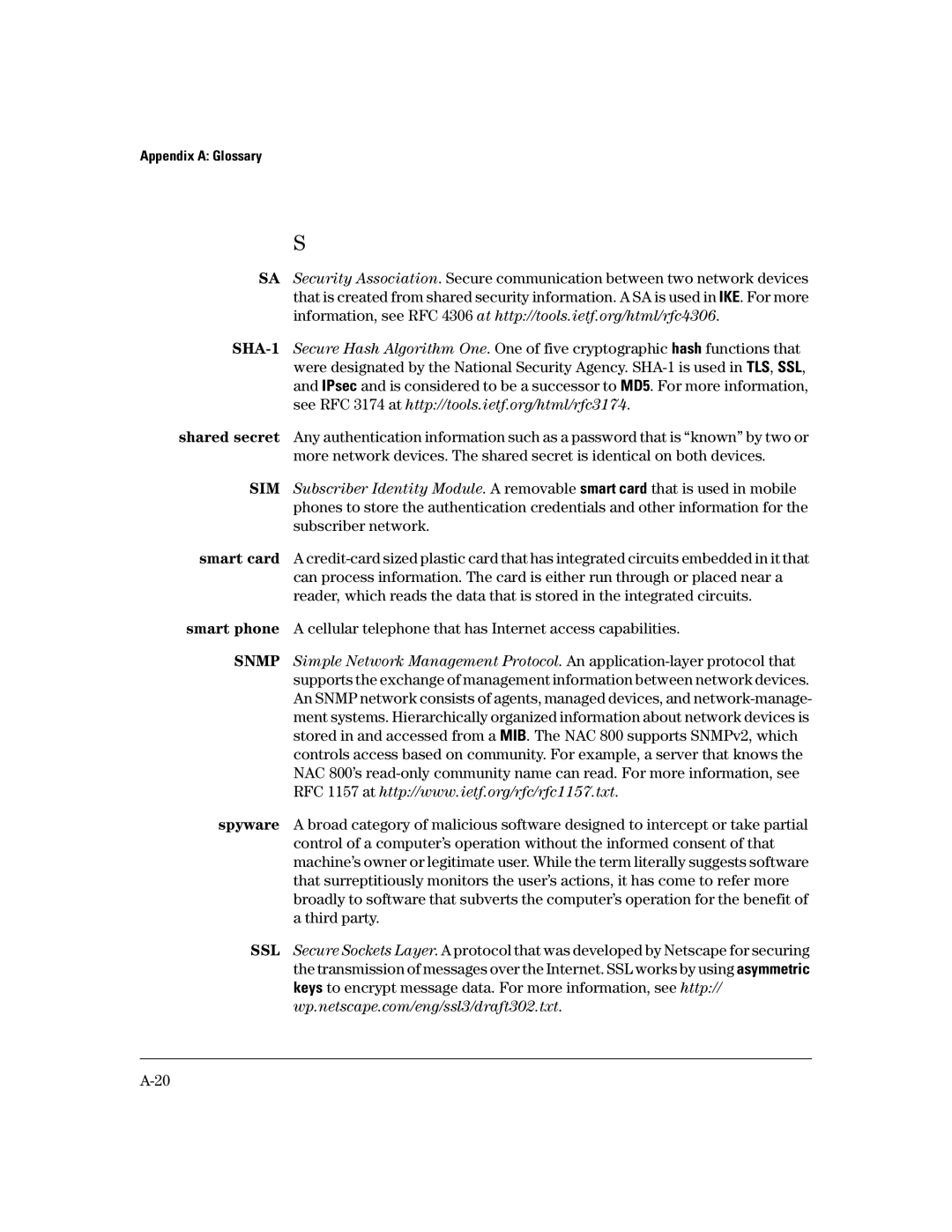Appendix A: Glossary
S
SA Security Association. Secure communication between two network devices that is created from shared security information. A SA is used in IKE. For more information, see RFC 4306 at http://tools.ietf.org/html/rfc4306.
shared secret Any authentication information such as a password that is “known” by two or more network devices. The shared secret is identical on both devices.
SIM Subscriber Identity Module. A removable smart card that is used in mobile phones to store the authentication credentials and other information for the subscriber network.
smart card A
smart phone A cellular telephone that has Internet access capabilities.
SNMP Simple Network Management Protocol. An
spyware A broad category of malicious software designed to intercept or take partial control of a computer’s operation without the informed consent of that machine’s owner or legitimate user. While the term literally suggests software that surreptitiously monitors the user’s actions, it has come to refer more broadly to software that subverts the computer’s operation for the benefit of a third party.
SSL Secure Sockets Layer. A protocol that was developed by Netscape for securing the transmission of messages over the Internet. SSL works by using asymmetric keys to encrypt message data. For more information, see http:// wp.netscape.com/eng/ssl3/draft302.txt.
